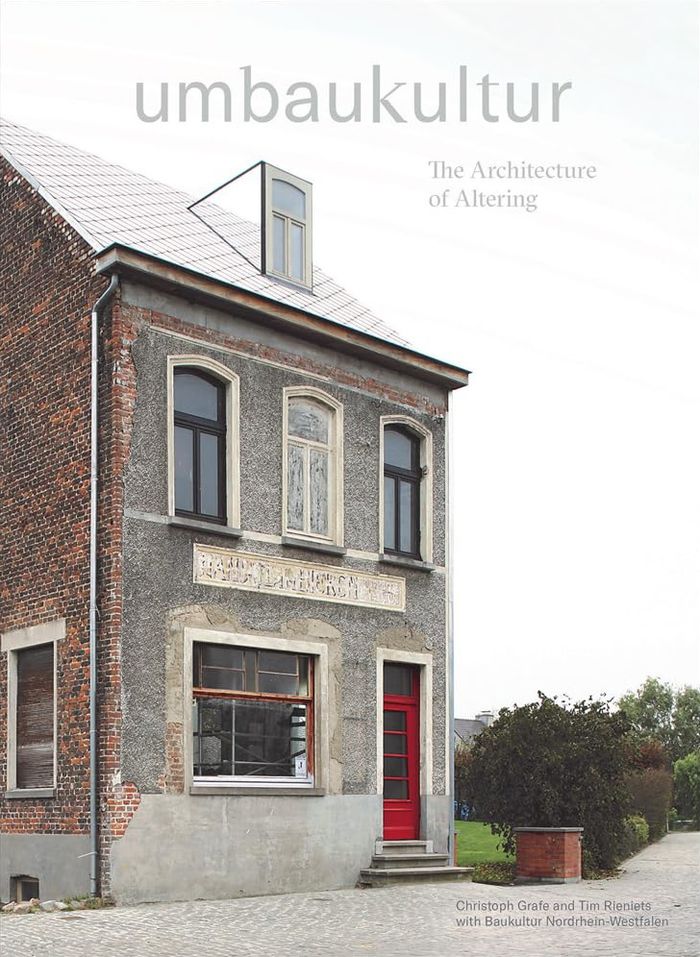$62.50
(available to order)
Summary:
War has entered the cities. Since September 11, 2001 at the latest, it has become apparent that this is the case not only in Jerusalem and the Middle East, but also in Western metropolises. This book presents a thorough investigation of the current situation in Jerusalem from a trilateral perspective: Israeli, Palestinian, and international experts air their views. The(...)
Arch Middle East
June 2006, Basel, Boston, Berlin
City of collision : Jerusalem and the principles of conflict urbanism
Actions:
Price:
$62.50
(available to order)
Summary:
War has entered the cities. Since September 11, 2001 at the latest, it has become apparent that this is the case not only in Jerusalem and the Middle East, but also in Western metropolises. This book presents a thorough investigation of the current situation in Jerusalem from a trilateral perspective: Israeli, Palestinian, and international experts air their views. The discussion centers on the production and use of urban space under the conditions created by the conflict, including, for example, the so-called security fence, urban enclaves, exclaves, the approach to monuments and no-man’s-land, and the instrumentalization of infrastructures, which leads to the crass juxtaposition of highly developed and impoverished urban spaces. The conflict, however, does not bring with it destruction and violence alone, but also exhibits ambivalent effects and, along with them, new cultural and urban realities. Jerusalem has become a prototype in the age of new urban violence.
Arch Middle East
$75.00
(available to order)
Summary:
"The City as a Resource" proposes a model of the city as a resource containing untapped possibilities and potentials for both individuals and society as a whole. This resource, however, is not inexhaustible; it will only be able to meet the needs of future generations if it is handled sustainably, rather than with an eye for short-term profits and partisan interests. The(...)
The city as a resource: concepts and methods for urban design
Actions:
Price:
$75.00
(available to order)
Summary:
"The City as a Resource" proposes a model of the city as a resource containing untapped possibilities and potentials for both individuals and society as a whole. This resource, however, is not inexhaustible; it will only be able to meet the needs of future generations if it is handled sustainably, rather than with an eye for short-term profits and partisan interests. The challenge, then, is to conceive of the city as a regenerative circuit--a complex of spatial and aesthetic qualities that can be sustained and developed over time. The City as a Resource is edited by Nicolas Kretschmann, Mark Michaeli, Tim Rieniets and Christian Salewski, and uses texts, projects and examples to present state-of-the-art urban planning methods and strategies for handling cities as resources, giving new life and new meaning to the idea of sustainable urban design.
Urban Theory
$59.50
(available to order)
Summary:
Conversion, adaptation, reuse - these techniques are as old as construction itself. However, since the industrialization of the building industry and the emergence of modernism in architecture, newly constructed buildings have dominated our idea of good and progressive architecture. For decades, conversion did not play a significant role in architectural practice. Today,(...)
August 2020
Umbaukultur: The architecture of altering
Actions:
Price:
$59.50
(available to order)
Summary:
Conversion, adaptation, reuse - these techniques are as old as construction itself. However, since the industrialization of the building industry and the emergence of modernism in architecture, newly constructed buildings have dominated our idea of good and progressive architecture. For decades, conversion did not play a significant role in architectural practice. Today, things have changed. The industrialization of the construction industry has led to environmental degradation, and the reform potential of modernism has been exhausted. Consequently, the existing building stock is one of the resources - perhaps even the most important resource - for the transformation of our cities. Against this backdrop, the architecture of conversion has made an unexpected comeback. Young architects in particular are providing surprising answers to the environmental and social questions of our time with their conversion projects.


